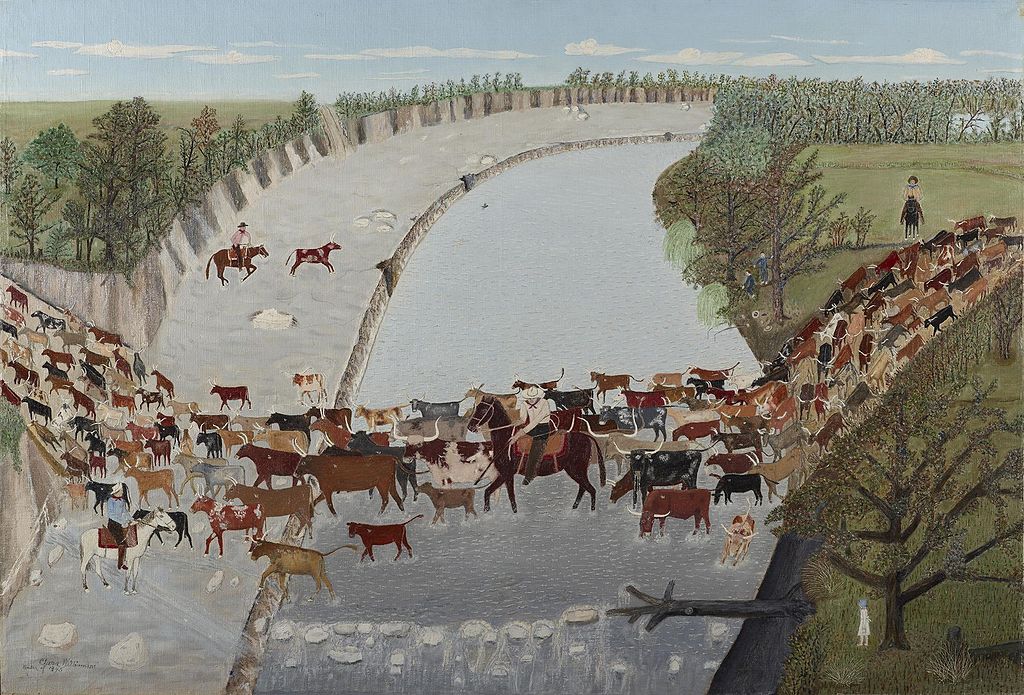Podcast: Download (Duration: 59:39 — 81.9MB)
Subscribe: Apple Podcasts | Spotify | Amazon Music | Android | Pandora | iHeartRadio | Blubrry | JioSaavn | Podchaser | Podcast Index | Email | TuneIn | Deezer | RSS
In 1866, a sixteen year old cowboy—the name was literal in his case—named J.M. Daugherty bought 1,000 cattle, hired five cowboys, and headed north for Missouri. In Indian Territory, he took the long way around Cherokee land, to avoid paying them for crossing their lands. As Daugherty told it, some Yankee “Jayhawkers” ambushed him, shot some of his companions, and took him prisoner, accusing him of bringing infected cattle into Kansas. Escaping, the teenager found his cowboys, rounded up the cattle, and then brought them to market.
Some of this story is true, and the true parts are probably the strangest. Cowboys were on average incredibly young. Only small numbers of them were able to drive immense numbers of cattle, and drove them for hundreds upon hundreds of miles. And, in the wake of the Civil War, there was always bad blood between “Yankees” in Kansas, and former Confederates in Texas.
But there is much else counterintuitive about cow drives, that didn’t make it into the movies. Cowboys liked vegetables, for one thing. For another, they were one part of continent-spanning industrial economy. That didn’t make it into Lonesome Dove, as best as I recall.
With me to discuss the great cattle drives from Texas is Tim Lehman, author of Up the Trail: How Texas Cowboys Herded Longhorns and Became an American Icon, published by Johns Hopkins Press as part of their series “How Things Worked.”
For Further Investigation
- E.C. “Teddy Blue” Abbott, We Pointed Them North
- Richard Grant, “Recollections of a Cowpuncher”–an article on Teddy Blue Abbott
- Joseph McCoy, Historic Sketches of the Cattle Trade of the West and Southwest
- J. Marvin Hunter, The Trail Drivers of Texas
- Jacqueline M. Moore, Cow Boys and Cattle Men
- Christopher Knowlton, Cattle Kingdom
- Lewis Atherton, The Cattle Kings

